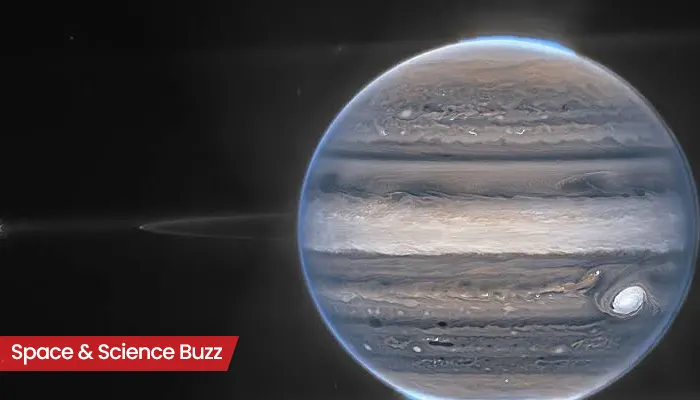June 21: The Longest Day of the Year - What's the Science Behind It?
- Sayan Paul
- 5 months ago
- 4 minutes read

It’s science, history, astronomy, and culture all rolled into one.
Have you ever noticed how the sun seems to stay in the sky a bit longer in June, almost like it’s reluctant to say goodbye? That’s not really an illusion. And today, June 21, marks a truly special event in our calendar, known as the summer solstice, or the longest day of the year in the Northern Hemisphere. But why exactly does this happen? What’s the science behind it? Let’s break it down in simple terms.
First Things First: What is a Solstice?
The word "solstice" comes from Latin: sol meaning “sun” and sistere meaning “to stand still.” On this day, it appears as if the sun pauses in the sky, reaching its highest point and the northernmost position. This marks the beginning of summer in the Northern Hemisphere and brings us the most daylight hours in the entire year.
The Summer Solstice is creeping up on us...
— Dr Peach's Stone Temple Gardening. (@dr_places) June 11, 2025
Pic by English Heritage pic.twitter.com/lren0SEILg
(Credit: Dr Peach's Stone Temple Gardening.)
But wait, the sun doesn’t literally stand still. This visual effect happens because of the Earth’s tilted axis and its orbit around the sun.
It All Starts with a Tilt
The real game-changer is Earth is tilted at an angle of 23.5 degrees on its axis (an imaginary line that runs from the North Pole to the South Pole). This tilt is the reason we experience seasons.
In June, the Northern Hemisphere is tilted towards the Sun. So, places north of the equator receive direct sunlight for a longer duration, giving us longer days. On June 21, the North Pole is tilted closest to the sun, which is why this is the longest day and shortest night of the year. It's like a spinning top slightly leaning to one side while rotating around a lamp (which represents the sun). As it goes around, different parts of the top get more or less light, that’s how Earth experiences seasons and solstices!
Happy Summer Solstice 🌞 ⠀
— AURIC (@theauriclife) June 20, 2021
⠀
Solstice marks a time when the Sun stands still for 3 days at its highest point and most strongest strength/power in the sky as it rises into the Silver Gate and opens up portals of energy, information, creativity, new beginnings and activates light pic.twitter.com/b7OHjqGCXR
(Credit: AURIC)
The Science Made Simple
Because of the tilt, the sun appears directly overhead at the Tropic of Cancer (an imaginary line located at 23.5° North latitude) on June 21.
The sun’s path across the sky is at its steepest angle, meaning it rises early and sets late, hence, the extra-long day.
According to NASA, Earth receives up to 30% more solar energy on this day compared to the winter solstice in December.
Oh, those summer nights! It's the #SummerSolstice, the longest day in the Northern Hemisphere—and the shortest in the Southern Hemisphere where winter starts.
— NASA (@NASA) June 21, 2023
Glance up tonight for a planetary cameo, with Mars and Venus just beside the Moon: https://t.co/ZJ6oF0jW7c pic.twitter.com/MOp8Dazh2c
(Credit: NASA)
Midnight Sun: A Magical Natural Phenomenon
Yes, the midnight sun is real. In areas near the Arctic Circle like northern Alaska, Canada, Norway, and Greenland, the sun doesn’t set for several days around the solstice. That means people can go hiking or even play sports at midnight under natural sunlight.
But Wait, Isn’t This the Hottest Day of the Year?
Surprisingly, no. Even though June 21 gets the most daylight, it’s not usually the hottest. That’s because of a phenomenon called seasonal lag. Earth's land and oceans take time to warm up. So the hottest days usually come a few weeks later, in July.
Fun Facts You Didn’t Know
While June 21 is usually the summer solstice, sometimes it can fall on June 20 or June 22 depending on leap years and time zones.
The earliest sunrise and latest sunset do not happen exactly on June 21, they occur a few days before and after.
Summer Solstice Celebration, Stockholm, Sweden, 1970. pic.twitter.com/hQ5ab7AKhz
— History Defined (@historydefined) June 1, 2025
(Credit: History Defined)
People gather at Stonehenge in England every year on this day to celebrate the sunrise. The ancient stones align with the sun in a way that many believe marks the solstice.
The Other Side: What About the Southern Hemisphere?
While we’re basking in the sun, it’s a completely different story down south. For countries like Australia, Argentina, and South Africa, June 21 is the shortest day of the year, their winter solstice.
So today, step outside, soak up the extra sunlight, and know you’re part of something bigger that connects us all.

.WEBP)
.WEBP)

.webp)
.WEBP)
.webp)
.webp)

.WEBP)
.webp)
.webp)
